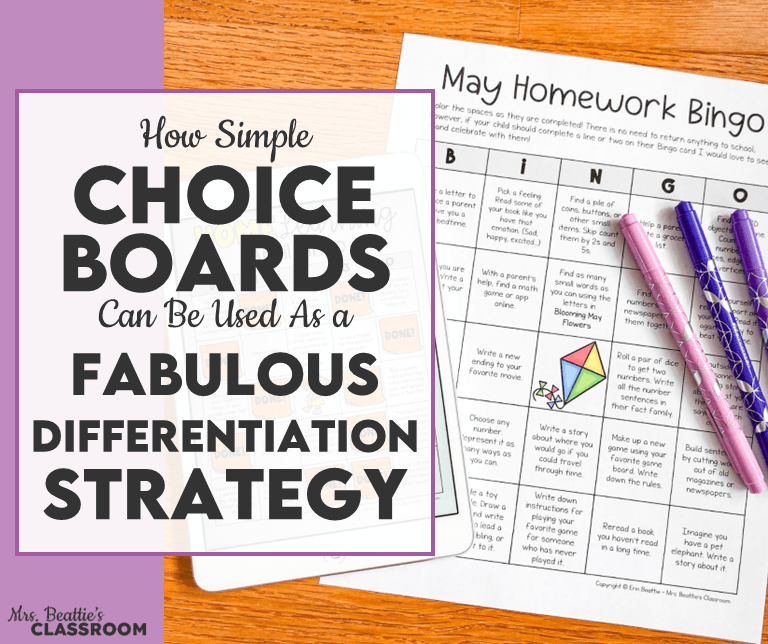Social and emotional learning skills have been part of classrooms for years, albeit often without this label. Recently, though, social-emotional learning skills are showing up explicitly in the curriculum. The revised 2020 Ontario Math Curriculum includes an entire strand dedicated to SEL in Math. Here’s how to build these skills in your classroom.
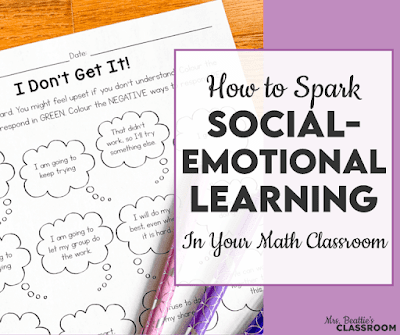
What is social-emotional learning?
Social-emotional learning, in particular how it pertains to the new math curriculum1, includes:
- identifying and managing emotions
- recognizing sources of stress and coping with challenges
- maintaining positive motivation and perseverance
- building relationships and communicating effectively
- developing self-awareness and a sense of identity
- thinking critically and creatively
Students need to learn about and practice these skills the same way they practice multiplication facts or work on their reading. These are life skills that can significantly impact student learning and performance.
What does SEL look like in the math classroom?
Social-emotional learning in math class focuses on mindset, perseverance, risk-taking, relationships, and attitude. These are the key indicators that students will build as they interact with the math curriculum’s processes and expectations.
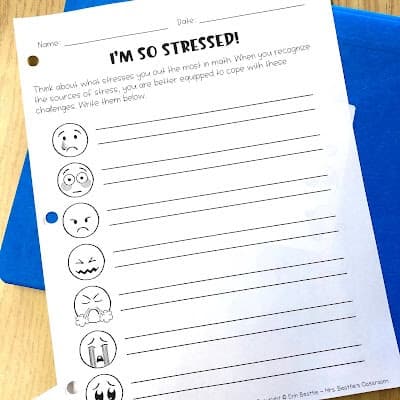
For a more detailed explanation, please check out the full curriculum document
Strategies for Building a Growth Mindset in Math
Unfortunately, math traditionally has a bad rep. I’m sure many of the students in your classroom have heard an adult in their life say, “I’m no good at math.” or “I’m just not a math person.” These statements immediately set our students up with an excuse or reason for failing. We must be extremely careful not to pass these fixed mindsets on to our students!
In my classroom, I have my students regularly reflect on how they feel about a subject or topic. You can do this in your classroom by asking questions such as:
- How did today’s math make you feel?
- What positive and negative ways can you respond when math feels hard?
- What can you say to a friend who is struggling with math?
- What parts of math feel stressful?
- What can you do when you feel stressed out in math class?
- What parts of math make you feel successful?
- What can friends say to you to make you feel better about math?
- What self-talk can you use to help you persevere?
- What can we learn from our mistakes in math?
- How are mistakes a positive experience in math?
- How can you respond appropriately if you disagree with someone during problem-solving activities?
- How can you be a good group member?
Having these conversations daily as part of your regular mathematics lessons is a great way to build these skills. They are best embedded into everyday experiences instead of being taught in isolation.
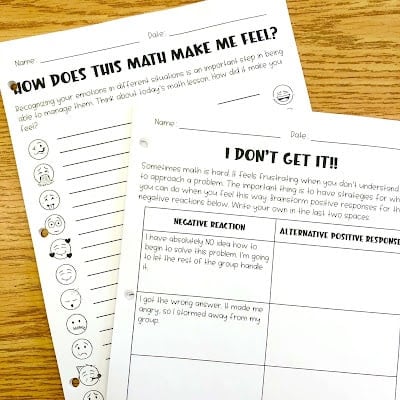
Strategies for Building Perseverance and Risk-Taking in Math
Perseverance is a means of getting through challenging situations. When math is hard, students want to give up. We have already established that they have the excuses they believe will justify that behavior. It is our job to shift that perspective. I believe that a key to building math perseverance is to celebrate mistakes!
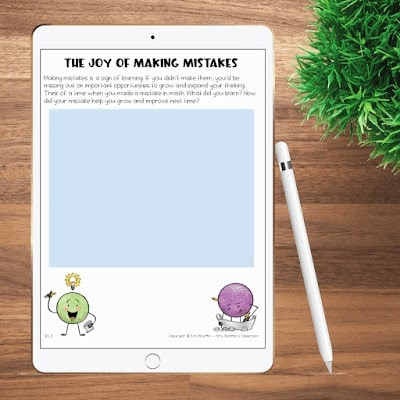
In my classroom, we spend a lot of time talking about how mistakes signal that we are growing and learning and that we don’t have the opportunity to stretch our brains and make new connections without mistakes. Some ways to do this include:
- Celebrate mistakes.
- Focus on the process of learning instead of the final result.
- Working on challenging problems weekly. I recommend 3-Act Math Tasks for this!
- Give students work with mistakes and have them explore what went wrong.
- Recognizing there are many ways to solve problems in math. Instead of working on 5 problems during a math period, why not find 5 different ways to solve ONE problem?
- Understanding that an unproductive struggle is not the same as a productive struggle and learning to shift in that direction.
- Give students time to reflect on their work. Using some of the questions above, students can develop a positive growth mindset and persevere when math gets tricky.
- Ask your students questions to guide them toward learning instead of giving them the answers when they struggle.
How to Help Students Shift Their Attitude About Math
The most important thing teachers need to do to help students shift their attitudes about math is to create a supportive environment.
If they feel like mistakes show failure, this won’t happen.
If they feel constant pressure to get the “right answer,” this won’t happen.
If they are laughed at or teased by the teacher or peers for errors, this won’t happen.
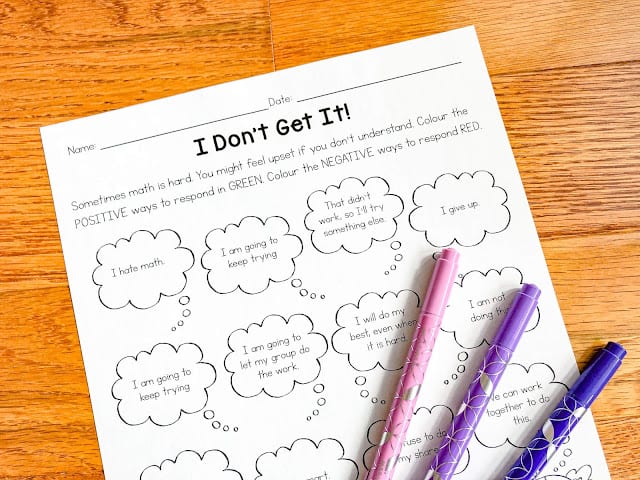
Students need a learning environment where they feel:
- Supported
- Free to make mistakes
- Safe
- Celebrated
- Praised
Shifting your feedback during assessment for learning is key. Try focusing on the students’ effort instead of whether or not they got the correct answer.
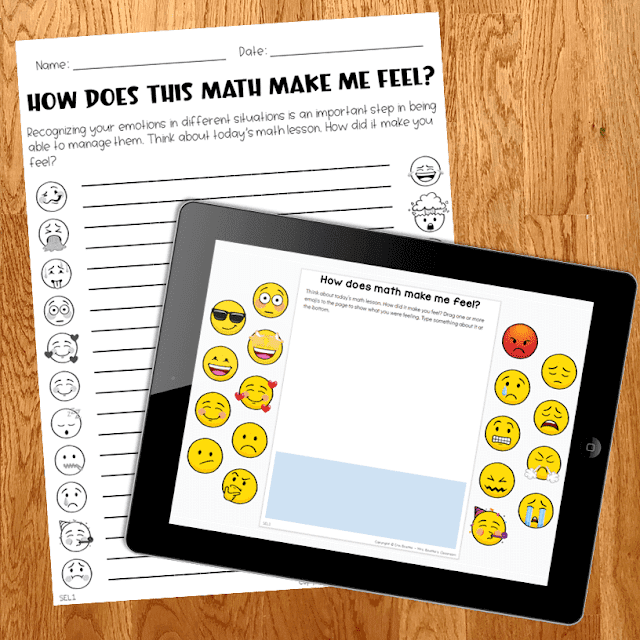
Building your students’ social and emotional learning in math class is not an overnight job, but making these skills part of your everyday teaching is a great way to make progress!
If you’d like to get started with SEL in your math class, grab a FREE sample of my resources for Grades 1-3 and 4-6 right here:

I have an entire set of SEL in Math activities for the Grades 1-3 and 4-6 curriculum in Ontario available here:


If you have enjoyed this post, please share it with friends and colleagues on Facebook or pin it on Pinterest:
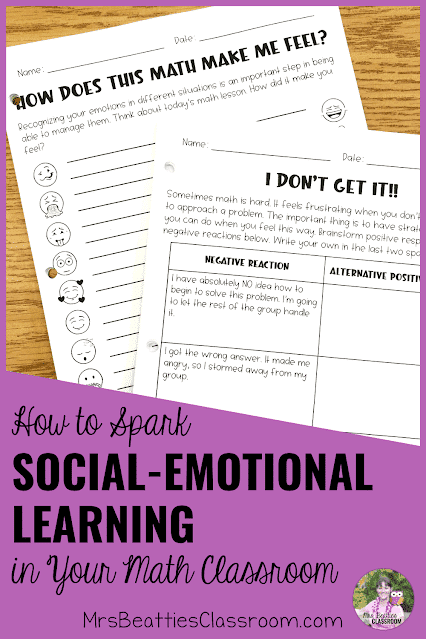
- Source: “A1. Social-Emotional Learning (SEL) Skills and the Mathematical ….” https://www.dcp.edu.gov.on.ca/en/curriculum/elementary-mathematics/grades/g1-math/strand-a/social-emotional-learning-sel-skills-and-the-mathematical-processes. ↩︎



